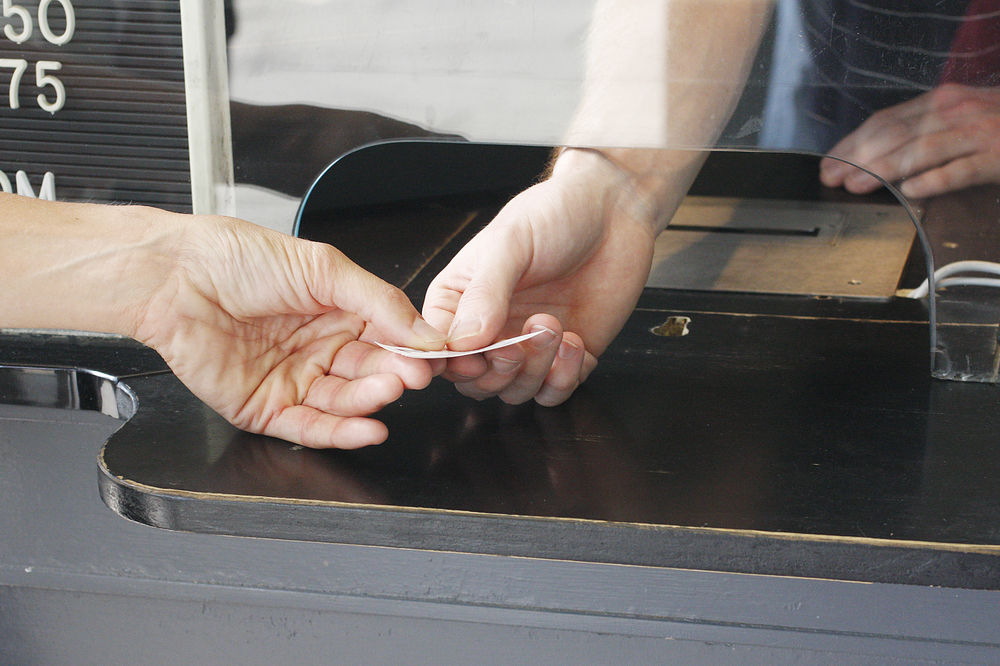Now that you’ve had some practice writing equations based on verbal representations and solving those kinds of equations, see if you can put all those steps together. First write an equation for each of these word problems. Then solve the equation. Finally, click the answer button to check your work.

Sonya has been selling her artwork at the local farmers' market for several weeks. And while she has sold quite a few paintings already, Sonya wonders if her project is actually costing her more money than she makes. She decides to evaluate her expenses and earnings a little more closely.
Sonya starts by building two equations. The first one shows how many paintings she will need to sell in order to break even. The other equation shows how many paintings Sonya will need to sell in order to reach a profit goal she has set.
It costs Sonya $37.25, on average, to pay for all the supplies needed to create her artwork. Sonya also pays $100 each week to rent out the space at the farmer's market. She sells her paintings for $15.25.
How many paintings will Sonya need to sell to break even? How many paintings must she sell to make a profit of $150?
Since the total spent equals the sale price of one painting times number of paintings sold, then let p be the number of paintings sold.
137.25 = 15.25p
To calculate p, divide both sides by 15.25, thus p = 9. If Sonya sells 9 paintings, she will break even.
Since the total spent plus the profit equals the sale price of one painting times the number of paintings sold, use the equation to solve for the number of paintings sold to earn the given profit.
137.25 + 150.00 = 15.25p
287.25 = 15.25p
p = 18.84
Since Sonya cannot sell a partial painting, she will need to sell 19 paintings in order to make a $150 profit each week, if she continues to sell her artwork for $15.25 each.
A client has asked you to create a custom painting with a wooden frame. The amount of wood you have for the frame will allow a perimeter of 48 inches. The width of the frame is 2x and the length is (2.8x + 3).
- Write an equation that represents the perimeter of the rectangle. Remember that perimeter equals two times the length plus two times the width.
- Solve for x. (Round to the nearest tenth.)
- Calculate the width and the length of the picture frame using the value for x.

2L + 2w = P
L = (2.8x + 3); w = 2x; P = 48 inches
2(2.8x + 3) + 2(2x) = 48
x = 4.4
w = 2x
w = (2)(4.4) = 8.8 inches
L = 2.8x + 3
L = (2.8)(4.4) + 3
L = 15.3 inches

Tickets are being sold for an event. The cost of a ticket is $5.00, but the event holders have to pay about $1.75 of expenses for each attendee. They want to make $2,275 in profit. How many tickets to do they need to sell?
If each ticket they sell brings in $5.00 but costs $1.75, the equation that represents their profit can be written with the variable t, for the number of tickets sold.
\(\large\mathsf{5t - 1.75t = 2,275 }\)
You can solve for t to find the total number of tickets they need to sell to make $2,275 in profit.
\(\large\mathsf{3.25t = 2,275}\)
\(\large\mathsf{ \frac{3.25t}{3.25} = \frac{2,275}{3.25}}\)
\(\large\mathsf{ t = 700}\)
The event will need to sell 700 tickets to make $2,275 in profit.
A rental truck costs $19.99 per day plus $1.20 per mile driven. If a three-day rental cost $164.37, how many miles was the truck driven?

First, write the equation that represents the cost of the van in terms of both days rented and miles driven.
\(\large\mathsf{19.99d + 1.20m = 164.37 }\)
Plug the value in for days (3) and then solve the equation for the number of miles, m.
\(\large\mathsf{19.99(3) + 1.20m = 164.37 }\)
\(\large\mathsf{100[59.97 + 1.20m = 164.37]}\)
\(\large\mathsf{5,997 + 120m = 16,437}\)
\(\large\mathsf{5,997 + 120m -5,997 = 16,437 - 5,997}\)
\(\large\mathsf{120m = 10,440}\)
\(\large\mathsf{ \frac{120m}{120} = \frac{10,440}{12}}\)
\(\large\mathsf{m = 87}\)
The truck was driven 87 miles.

Leonard makes $9.25 for every hour he works up to 40 hours a week. If he works overtime, he makes $13.88. Last week, he worked 40 hours plus n overtime hours and made a total of $456.75 on his check. How many overtime hours did he work?
First, write the equation that represents the total earned for working at the job.
\(\large\mathsf{9.25r + 13.88n = 456.75}\)
Plug the value in for his regular hours (r = 40) and then solve the equation for the number of overtime hours, n.
\(\large\mathsf{9.25(40) + 13.88n = 456.75}\)
\(\large\mathsf{100[370.00 + 13.88n = 456.75]}\)
\(\large\mathsf{37,000 + 1,388n = 45,675}\)
\(\large\mathsf{37,000 + 1,388n - 37,000 = 45,675 - 37,000}\)
\(\large\mathsf{1,388n = 8,675}\)
\(\large\mathsf{ \frac{1,388n}{1,388} = \frac{8,675}{1,388}}\)
\(\large\mathsf{n = 6 \frac{1}{4}}\)
He worked \(\mathsf{6 \frac{1}{4}}\) overtime hours.
